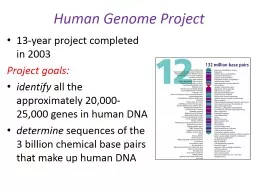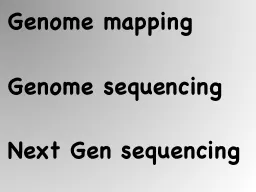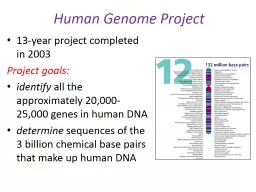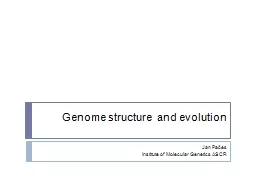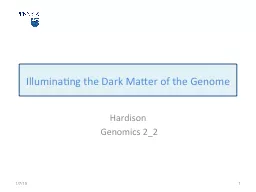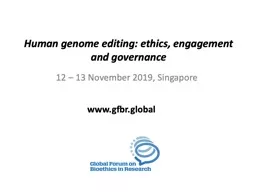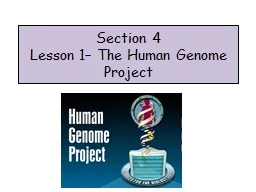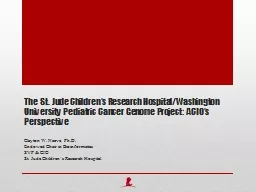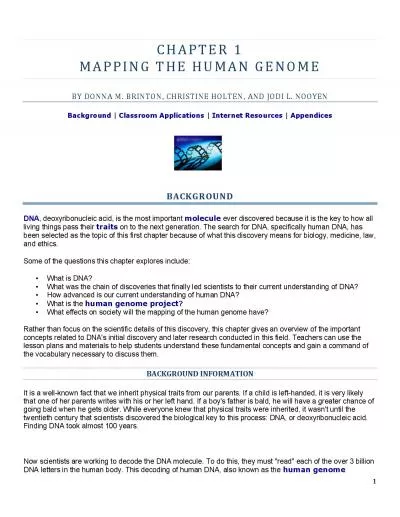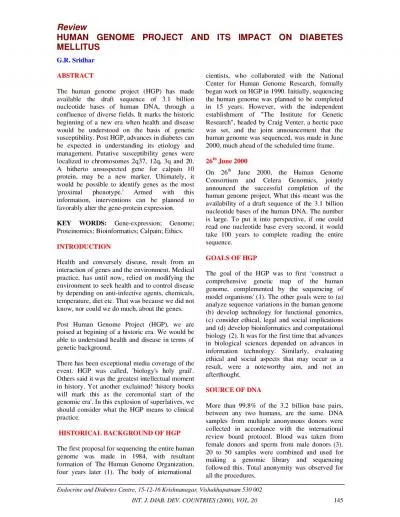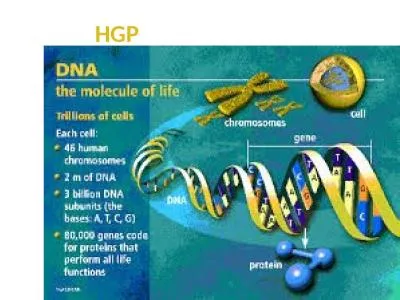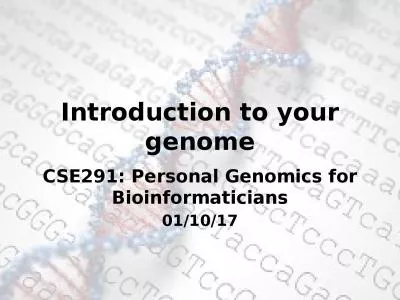PPT-Human Genome Project 13-year project completed in 2003
Author : stefany-barnette | Published Date : 2020-04-02
Project goals identify all the approximately 2000025000 genes in human DNA determine sequences of the 3 billion chemical base pairs that make up human DNA Karyotype
Presentation Embed Code
Download Presentation
Download Presentation The PPT/PDF document " Human Genome Project 13-year project co..." is the property of its rightful owner. Permission is granted to download and print the materials on this website for personal, non-commercial use only, and to display it on your personal computer provided you do not modify the materials and that you retain all copyright notices contained in the materials. By downloading content from our website, you accept the terms of this agreement.
Human Genome Project 13-year project completed in 2003: Transcript
Download Rules Of Document
" Human Genome Project 13-year project completed in 2003"The content belongs to its owner. You may download and print it for personal use, without modification, and keep all copyright notices. By downloading, you agree to these terms.
Related Documents

